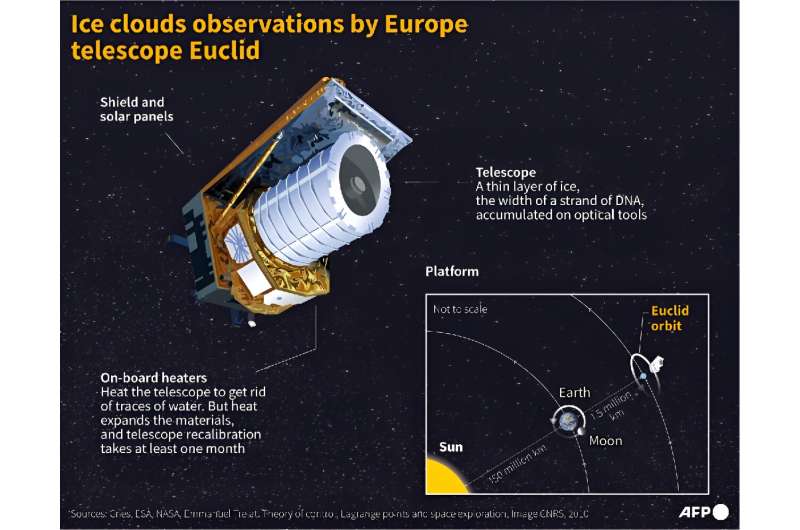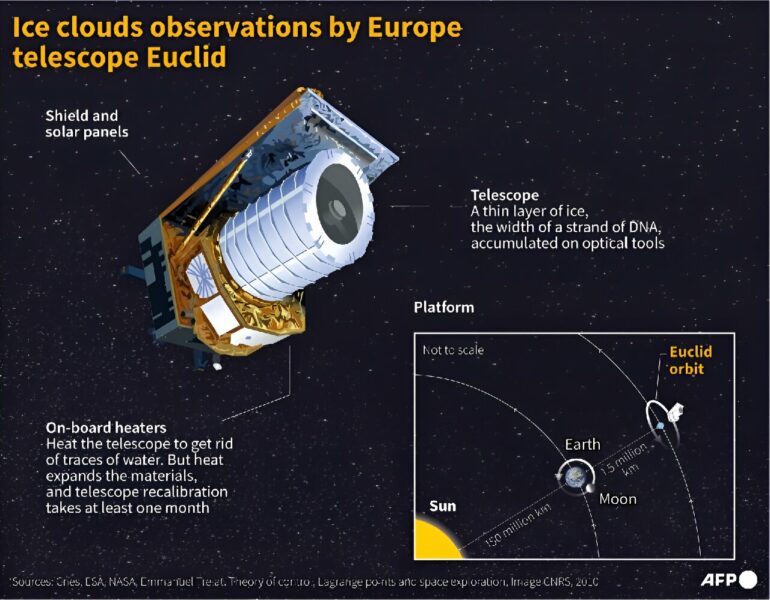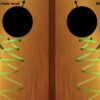The vision of the Euclid space telescope has been restored following a delicate operation that successfully melted a thin layer of ice that had been clouding its sight, the European Space Agency announced on Tuesday.
There had been fears that the creeping ice could delay the mission of Europe’s space telescope, which blasted off in July on the world’s first mission to investigate the cosmic mysteries of dark matter and dark energy.
However a de-icing procedure to gently warm up an optimal mirror on the telescope “performed significantly better than hoped”, the ESA said.
“After the very first mirror was warmed by just 34 degrees, Euclid’s sight was restored,” it added.
In November, scientists on the ground noticed that they were losing a little light coming into the telescope’s visible light imager.
They determined that the problem was a layer of ice—thought to be just the width of a strand of DNA—building up on the telescope’s optical surfaces.
There are heaters onboard that can warm up the entire spacecraft, a process that was carried out shortly after Euclid launched.
But heat expands many materials, and warming up the whole spacecraft now would require careful recalibration.
That had the potential to delay the telescope’s mission by months, Euclid instrument operations scientist Ralf Kohley told AFP last week.
So the team opted instead to warm up single mirrors, hoping to clear up the problem without having to heat the whole spacecraft.
Kohley had said they would move through a number of different mirrors until they found the right one.
But the ESA emphasized they had solved the problem by heating up the very first mirror attempted.

Ice cloud observations by Europe Euclid telescope.
Wide view of the universe
Keeping out water is a common problem for all spacecraft.
Despite best efforts on the ground, a tiny amount of water absorbed during a spacecraft’s assembly on Earth can smuggle its way to space.
Faced with the cold vastness of space, the water molecules freeze to the first surface they can—in this case Euclid’s mirrors.
The ice was not Euclid’s first setback.
The team on the ground previously fixed a software problem in which cosmic rays confused the spacecraft’s guidance sensor.
Some unwanted sunlight also interfered with the telescope’s observations, a problem solved by slightly rotating the spacecraft, Kohley said.
Euclid is not far from its fellow telescope, the James Webb, at a stable hovering spot around 1.5 million kilometers (more than 930,000 miles) from Earth.
In contrast to Webb’s spectacularly long-distance sight, Euclid takes in a far wider view of the cosmos.
It will use this vision to chart one third of the sky—encompassing a mind-boggling two billion galaxies—to create what has been billed as the most accurate 3D map ever of the universe.
Scientists hope this will help shed more light on dark matter and dark energy, which are thought to make up 95 percent of the universe but remain shrouded in mystery.
2024 AFP
Citation:
Europe space telescope’s sight restored after de-icing procedure (2024, March 26)



